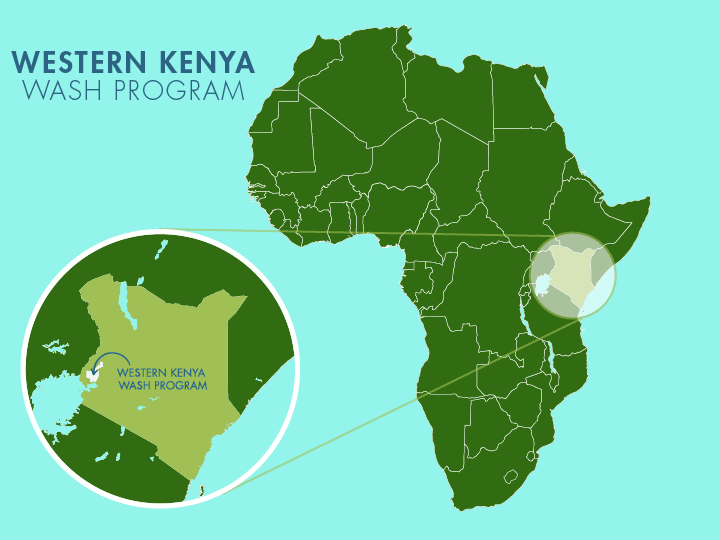The Shipala Community relies heavily on a partially protected spring, which serves not only the 196 local residents but also people from nearby villages. Despite being the community’s only source of water, it faces significant structural damage. The Isaacs Kwoma spring's box is broken, and the staircase has been damaged, making access dangerous—especially for young children who often walk barefoot.
Fetching water from the spring is a daily routine that demands both time and patience, particularly on weekends when household water demands increase.
The community reports recurring stomachaches, especially during the rainy season. Surface runoff carries waste materials into the open spring box, leading to contamination. The terrain surrounding the spring is slippery and hazardous, with sharp stones and uneven ground that increase the risk of injury.

Beatrice Nechesa.
Beatrice Nechesa, a 69-year-old farmer, describes the area as “completely worn out” and filled with hazards. “The hardcores are sharp and can easily cause injuries; the absence of stairways makes it even worse because the area is slippery, and people always fall and injure themselves or break their water containers,” she said.
For Beatrice, collecting water is both physically demanding and emotionally stressful. She visits the spring up to five times per day, depending on her household needs and farm work.
“Collecting water depends on the number of activities done in a day. During weekends, more water is needed, hence forcing us to fetch more than five times a day,” she explained.

The queues can be long and tense, often leading to arguments and harassment.
“Quarreling at the water source has created bad relationships between me and neighbors,” she shared. “My children always complain [of] being forced to be the last in the queue because they are small and cannot fight the others. This constant bullying makes me feel annoyed with their parents.”

In the past, community members had attempted to repair the spring, but the work was substandard and lasted only briefly. Beatrice recalled that “some of the community members decided to repair the area because the situation was worse, but it only lasted for a few days.” Since then, no significant repairs have been done, and conditions have continued to deteriorate.
Since the spring broke down, daily life has grown more difficult.
“I’m forced to support the container when I collect water to avoid losing water or damaging the container,” said Beatrice. “The access point is very slippery—someone can easily fall down if he or she is not careful enough while walking.”

Beatrice harvests maize.
Despite these hardships, she maintains that water is central to life and dignity. “Water is life, everybody needs water to survive and live a life of dignity. Water helps in cooking, bathing, drinking, etc. Water brings happiness amongst people and comfort."
The community eagerly looks forward to a rehabilitated and safe water point. A properly protected spring would eliminate overcrowding and queuing, reduce injuries, and protect children from harassment. It would also improve hygiene and allow families, especially women like Beatrice, to reclaim time for farming, livestock care, and other productive activities.
As Beatrice said, with better access, “I would use the time to look for animal feeds for my dairy cows and, in turn, increase milk production. I will also have more time on my farm to plant more crops so that I can produce enough food for my family.”
Steps Toward a Solution
Our technical experts worked with the local community to identify the most effective solution to their water crisis. They decided to safeguard the existing flowing spring.
Spring Protection
Springs are natural water sources that originate from deep underground. As water travels through various layers of the earth, it undergoes a natural filtration process, making it cleaner and safer to drink. To protect these spring sources from contamination, we construct a waterproof cement structure around layers of clay, stone, and soil. This design channels the spring water through a discharge pipe, facilitating easier, faster, and cleaner water collection.
Chlorine Dispenser
As an extra measure towards water quality safety, uniquely engineered chlorine dispensers are installed at all of our spring protection projects so community members can treat their water with pre-measured doses of chlorine. The chlorine treats any possible contamination and stays active for two to three days, ensuring water stays safe to use even when stored at home. Chlorine delivery and maintenance of the dispensers are part of our ongoing community support.
Community Education & Ownership
Hygiene and sanitation training are integral to our water projects. Training is tailored to each community's specific needs and includes key topics such as proper water handling, improved hygiene practices, disease transmission prevention, and care of the new water point. Safe water and improved hygiene habits foster a healthier future for everyone in the community. Encouraged and supported by the guidance of our team, a water user committee representative of the community's diverse members assumes responsibility for maintaining the water point, often gathering fees to ensure its upkeep.

 Protected Spring
Protected Spring
 Rehabilitation Project
Rehabilitation Project


















